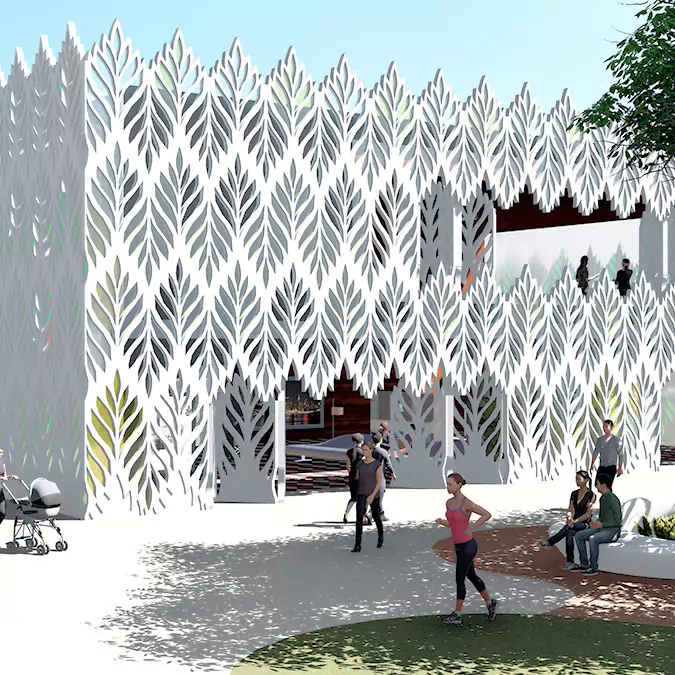A building’s skin acts as an intermediary between its interior and exterior. It fulfils different functions, such as favouring privacy in the case of homes, or also regulating the entry of light for climatic reasons. However, it is very expensive to heat, cool or ventilate homes and architectural spaces. In fact, buildings with huge glass façades are those that require the most energy for these tasks and therefore the ones that dissipate and waste it the most. The skin we’re proposing is a solution to this question.
It’s a modular articulated system, which allows a rational control of light entry. Designed for both small and large façade areas, it consists of a modular articulated matrix that is fixed to the external glass surface, or onto the building’s outer edge.
The articulated modules of the skin are mounted on a grid with which it is possible to obtain numerous different patterns. Indeed, the final result of the whole will depend on the particular design of the individual module, which enables a practically unlimited, flexible and creative design.
On the other hand, since they are articulated, the movement of each module is achieved through a control system that can be manual (mechanical), or electronic (with sensors and electric motors). In the latter case, the operating interface of the articulated modular system, which is accessed from a smartphone or a computer, is easy to learn and operate by the user.
All this, combined with a lightweight support structure that facilitates its simple and direct integration into any existing façade, makes this system a viable solution for large-scale construction.






